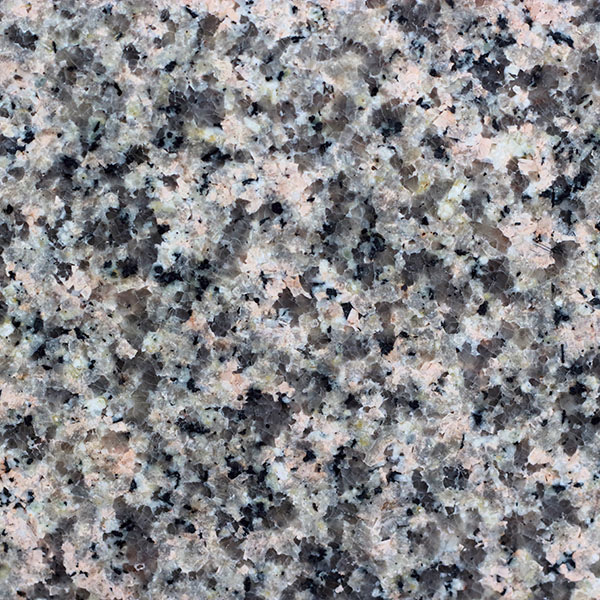Granite is a hard, coarse-grained rock that makes up a large part of every continent. Granite consists chiefly of three minerals—quartz, alkali feldspar, and plagioclase feldspar. These minerals make granite white, pink, or light gray. Granite also contains small amounts of dark-brown, dark-green, or black minerals, such as hornblende and biotite mica. The grains of the minerals in granite are so large that they can easily be distinguished. Many grains measure more than 1/5 inch (0.5 centimeter) wide.

The minerals in granite are interlocked like the pieces of a jigsaw puzzle. As a result, granite is a strong, durable rock useful in the construction of buildings. Most granite can withstand weathering for centuries and can be polished smooth, making it especially suitable for columns, tombstones, and monuments.
Geologists classify granite as an igneous rock (see Igneous rock ). They have concluded most granite is formed by the slow cooling and crystallization of molten material called magma. This magma has the same chemical composition as granite. It forms from rocks that melt 16 to 25 miles (25 to 40 kilometers) below the surface of the continents. These rocks melt at temperatures between 1200° and 1650 °F. (650° and 900 °C). The magma rises because it is lighter than the surrounding solid rocks. As the magma rises, it cools. Most granite magma cools slowly enough to form coarse crystals, and it solidifies below the earth’s surface.
Sometimes granitic magma erupts from volcanoes and cools too quickly to form large crystals. The resulting rock, called rhyolite, has the same mineral composition as granite but is fine grained.
Experiments have shown that many kinds of rocks yield granite when they melt. Rocks melt in stages, and the minerals that form granite melt first. One of the reasons that granite is so abundant may be the ease with which granitic magma forms.
North America consists largely of granite buried under sedimentary rock (see Sedimentary rock ). Most granite appears where deeply buried rocks are brought to the surface of the earth by mountain-building movements in the earth’s crust. Erosion removes the upper parts of the mountains, exposing the granite underneath. Large amounts of granite occur in such North American mountain ranges as the Appalachians, the Sierra Nevada, and the Rockies.
